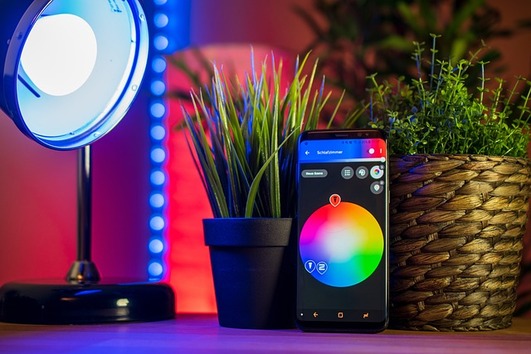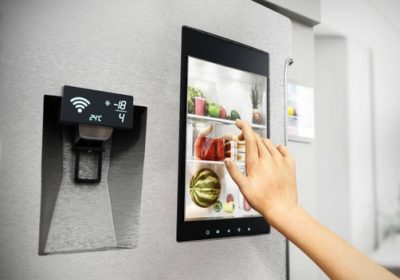Smart Lighting Solutions: Enhancing Home Comfort and Energy Savings with Advanced Lighting Technologies

Lighting has come a long way since the invention of the incandescent bulb by Thomas Edison over a century ago. Today, we have access to a wide range of lighting technologies that offer superior performance, energy efficiency, and convenience. From LED bulbs to smart lighting systems, these advanced solutions can help us enhance the comfort and functionality of our homes while reducing our energy consumption and environmental impact.
In this article, we will explore the latest trends and technologies in smart lighting and how they can benefit homeowners in terms of energy savings, convenience, and aesthetics.
The Rise of LED Lighting
One of the most significant advances in lighting technology in recent years has been the widespread adoption of LED (light-emitting diode) bulbs. Unlike traditional incandescent bulbs, which use a heated filament to produce light, LED bulbs rely on semiconductors to generate light. This makes them far more energy-efficient, durable, and versatile than their predecessors.
According to the U.S. Department of Energy, LED bulbs use 75% less energy than incandescent bulbs and last 25 times longer on average. This means that homeowners can save a significant amount of money on their energy bills over the lifespan of their LED bulbs, which can be up to 25,000 hours or more.
Moreover, LED bulbs come in a variety of colors and hues, making them ideal for creating customized lighting schemes that suit different moods and activities. For example, warm white light can create a cozy and intimate atmosphere in a bedroom or living room, while cool white light can enhance focus and productivity in a home office or kitchen.
Smart Lighting Systems
While LED bulbs offer a significant improvement over traditional lighting, they still require manual controls to turn them on and off and adjust their brightness levels. This is where smart lighting systems come in.
Smart lighting systems consist of LED bulbs that can be wirelessly connected to a hub or controller, allowing homeowners to control their lights from a smartphone app or voice commands. This means that homeowners can turn their lights on or off, adjust their brightness levels, and even change their colors without having to get up from their seats or reach for a light switch.
Moreover, smart lighting systems can be programmed to respond to certain triggers or events, such as motion sensors, time of day, or weather conditions. For example, a smart lighting system can be set to turn on automatically when someone enters a room and turn off when the room is empty. Alternatively, it can be programmed to dim the lights gradually as the night wears on, signaling the body to prepare for sleep.
Smart lighting systems can also be integrated with other smart home devices, such as thermostats, security cameras, and entertainment systems. This allows homeowners to create customized scenes that suit their preferences and lifestyle. For example, a “movie night” scene can dim the lights, lower the thermostat, and turn on the TV and sound system with a single voice command.
Energy Savings and Environmental Benefits
One of the key benefits of smart lighting systems is their ability to save energy and reduce carbon emissions. By automating lighting controls and optimizing their use, homeowners can reduce their energy consumption and lower their carbon footprint.
For example, a smart lighting system can be programmed to turn off the lights automatically when no one is in the room, avoiding wasteful energy use. It can also adjust the brightness levels of the lights based on natural light levels, reducing the need for artificial lighting during the day.
Moreover, smart lighting systems can be integrated with renewable energy sources, such as solar panels or wind turbines, to further reduce their environmental impact. By using clean and renewable energy to power their lights, homeowners can contribute to the global effort to combat climate change and promote sustainable living.
Smart lighting systems not only provide energy savings and environmental benefits, but they can also enhance home comfort and aesthetics. By customizing the lighting schemes to suit different activities and moods, homeowners can create a more inviting and pleasant atmosphere in their homes.
For example, a smart lighting system can be programmed to gradually brighten the lights in the morning, simulating a natural sunrise and helping to wake up the body. It can also create a relaxing and soothing ambiance in the evening, using warm and dimmed lights to promote rest and relaxation.
Moreover, smart lighting systems can be used to accentuate architectural features, artwork, or furniture in a home, creating a dramatic and visually appealing effect. By adjusting the color and intensity of the lights, homeowners can create a personalized and artistic lighting scheme that showcases their style and personality.
Smart Lighting Solutions for Every Room
Smart lighting systems can be installed in every room of a home, from the living room to the bedroom, the kitchen to the bathroom. Here are some examples of how smart lighting solutions can be used to enhance the functionality and aesthetics of different rooms:
Living Room: A smart lighting system can be used to create a cozy and inviting atmosphere in the living room, using warm white lights and dimming controls. It can also be programmed to turn on and off automatically based on the occupancy of the room, reducing energy consumption and ensuring security.
Bedroom: A smart lighting system can be used to create a relaxing and soothing ambiance in the bedroom, using warm white or color-changing lights. It can also be programmed to gradually dim the lights as the night wears on, promoting restful sleep and minimizing disruptions.
Kitchen: A smart lighting system can be used to enhance the functionality and safety of the kitchen, using bright white lights and motion sensors. It can also be programmed to turn on and off automatically when someone enters or leaves the room, avoiding energy waste and improving convenience.
Bathroom: A smart lighting system can be used to create a spa-like atmosphere in the bathroom, using color-changing lights and dimming controls. It can also be programmed to turn on and off automatically based on the occupancy of the room, reducing energy consumption and ensuring privacy.
Smart lighting systems are not only efficient and convenient, but they can also be controlled remotely using smartphones or voice assistants. This feature allows homeowners to adjust the lighting settings from anywhere, whether they are at home or away. For example, if you forgot to turn off the lights when you left home, you can use your smartphone to turn them off remotely, saving energy and money.
Another advantage of smart lighting systems is that they can be integrated with other smart home devices, such as thermostats, security cameras, and door locks. This integration allows homeowners to create a seamless and interconnected home automation system that can be controlled from a single platform, such as a smartphone app or a voice assistant.
Smart lighting systems also offer a wide range of customization options, allowing homeowners to create different lighting schemes for different occasions and activities. For example, they can create a bright and energetic lighting scheme for a party or a romantic and intimate lighting scheme for a dinner date. This flexibility allows homeowners to create a personalized and unique ambiance in their homes, which can enhance their quality of life and well-being.
Energy Savings and Environmental Benefits
Smart lighting systems are highly energy-efficient, using LED bulbs that consume less energy than traditional incandescent bulbs. LED bulbs also last longer and produce less heat, which can help reduce the need for air conditioning and save even more energy. According to the US Department of Energy, LED bulbs use up to 75% less energy than traditional incandescent bulbs and can last up to 25 times longer.
By using smart lighting systems and LED bulbs, homeowners can significantly reduce their energy consumption and carbon footprint. This reduction can help contribute to the global effort to combat climate change and promote a more sustainable future.
Moreover, some smart lighting systems come with sensors and automation features that can further enhance energy savings. For example, they can automatically turn off the lights when a room is empty or adjust the lighting level based on the natural light available in a room.
Installation and Cost
The installation of a smart lighting system may require some technical expertise, as it involves wiring and programming. However, many smart lighting systems come with user-friendly apps and installation guides that make the process relatively easy for homeowners.
The cost of a smart lighting system can vary depending on the features and complexity of the system. Some basic systems can cost as little as $50, while more advanced systems can cost several hundred dollars. However, the long-term energy savings and environmental benefits of a smart lighting system can offset the initial investment and provide a return on investment over time.
Conclusion
Smart lighting solutions offer numerous benefits for homeowners, from energy savings and environmental benefits to enhanced comfort and aesthetics. By leveraging the latest lighting technologies and automation features, homeowners can create customized and energy-efficient lighting schemes that suit their preferences and lifestyle.
Moreover, smart lighting systems can be integrated with other smart home devices, allowing homeowners to create a seamless and interconnected home automation system that can be controlled from a single platform. This integration can enhance the functionality and convenience of a home while promoting energy savings and environmental sustainability.
Therefore, if you are looking for ways to save energy, enhance home comfort, and contribute to the global effort to combat climate change, consider upgrading your home lighting system to a smart lighting solution today.





